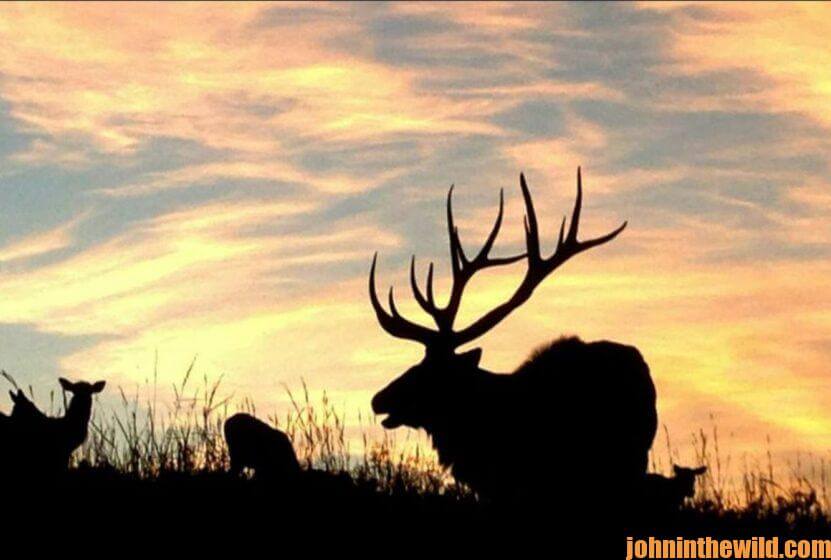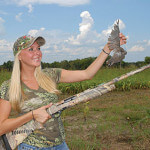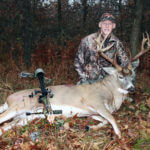Editor’s Note: I love to hear the call of the sirens like the Greeks of old, even if the sirens aren’t scantily-clad beautiful mermaids but instead have big, heavy, massive antlers and thick, brown coats. Today elk – majestic animals once thought to be only in the West – have

returned home to the East. One source of good news in this COVID world is that elk weighing 800 pounds, standing 5 feet tall at the shoulder and having a length of 8 feet have come home once again to some eastern states. Today you can hear the mystical, melodic, piercing, high-pitched bull elk bugles in some of their historical habitat. Thanks to the efforts of state departments of conservation, interested landowners and the Rocky Mountain Elk Foundation (https://www.rmef.org/), 11 eastern states, including: Minnesota, Wisconsin, Michigan, Pennsylvania, West Virginia, North Carolina, Kentucky, Tennessee, Missouri, Virginia and Arkansas, have had their elk restocked, and the herds are thriving. Several states even offer limited hunting opportunities for elk. Prior to European settlement, more than 10-million elk roamed nearly all of the U.S. and parts of Canada. Today that number totals about 1 million. By the 1840s to the 1870s, most of the elk east of the Mississippi River had been killed for food and hides that could be sold for other essentials by frontier settlers. For many years, finding, seeing or hearing an elk in the East was impossible.
- West Virginia: Like other eastern states, West Virginia had seen its elk disappear. But then the state decided to follow Kentucky’s model for elk by placing them in reclaimed, strip mined land. Today West Virginia’s herd is at 11,000 animals, and those elk have helped grow a new economy through the wildlife watchers and hunters chasing elk (https://wvdnr.gov/plants-animals/elk/).

- Wisconsin: Although Wisconsin saw its elk disappear in the 1880s, it was the first eastern state to bring back wild elk. In 1995, elk were reintroduced into the North Woods and soon became home to a thriving herd. Through working with local, state, federal and tribal partners, the RMEF completed 500+ restoration, conservation and hunting heritage projects in Wisconsin, valued at $9.7 million. Other projects followed with more introductions of elk and more lands protected for them to grow and expand their herds on massive blocks of protected land (https://dnr.wisconsin.gov/topic/hunt/elkhunting.html).
Throughout history, elk played a major role in the survival of Native Americans and the American frontiersmen. But as human populations in the East grew, and farms and ranches in the East encroached on elk habitat, these beautiful beasts that sang their songs with high-pitched bugles vanished. For some years, their songs were lost in the wilderness. However, today conservation organizations, state and federal agencies as well as the RMEF and interested landowners and citizens have brought these prized animals back to their historical range where we now can see, hear and enjoy these woodland monarchs.
 To learn more about hunting elk successfully, check out John E. Phillips’ book, “Elk: Keys to 23 More Hunters’ Success,” available in Kindle, print and Audible at https://www.amazon.com/gp/product/B09B2H9V6Y/ref=dbs_a_def_rwt_hsch_vapi_tkin_p1_i2. You may have to copy and paste this click into your browser. (When you click on this book, notice on the left where Amazon allows you to read and hear 10% of the book for free). On the right side of the page and below the offer for a free Audible trial, you can click on Buy the Audible with one click.
To learn more about hunting elk successfully, check out John E. Phillips’ book, “Elk: Keys to 23 More Hunters’ Success,” available in Kindle, print and Audible at https://www.amazon.com/gp/product/B09B2H9V6Y/ref=dbs_a_def_rwt_hsch_vapi_tkin_p1_i2. You may have to copy and paste this click into your browser. (When you click on this book, notice on the left where Amazon allows you to read and hear 10% of the book for free). On the right side of the page and below the offer for a free Audible trial, you can click on Buy the Audible with one click.
Tomorrow: Places to See and Learn about Eastern Elk
















